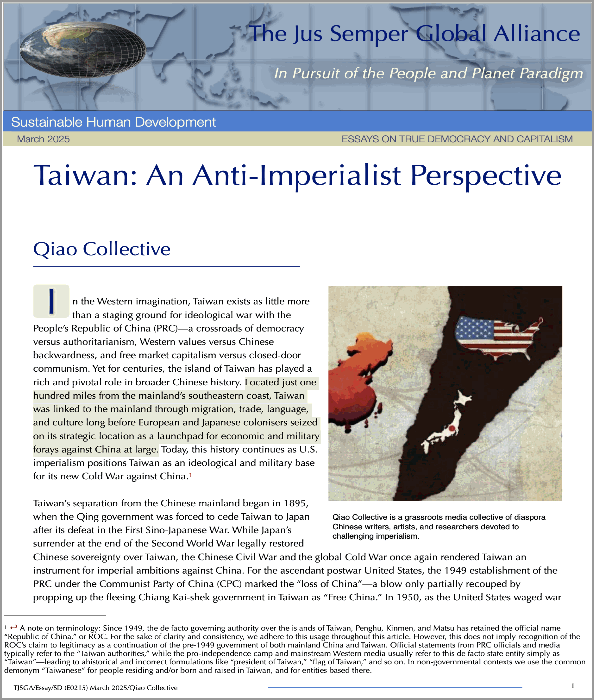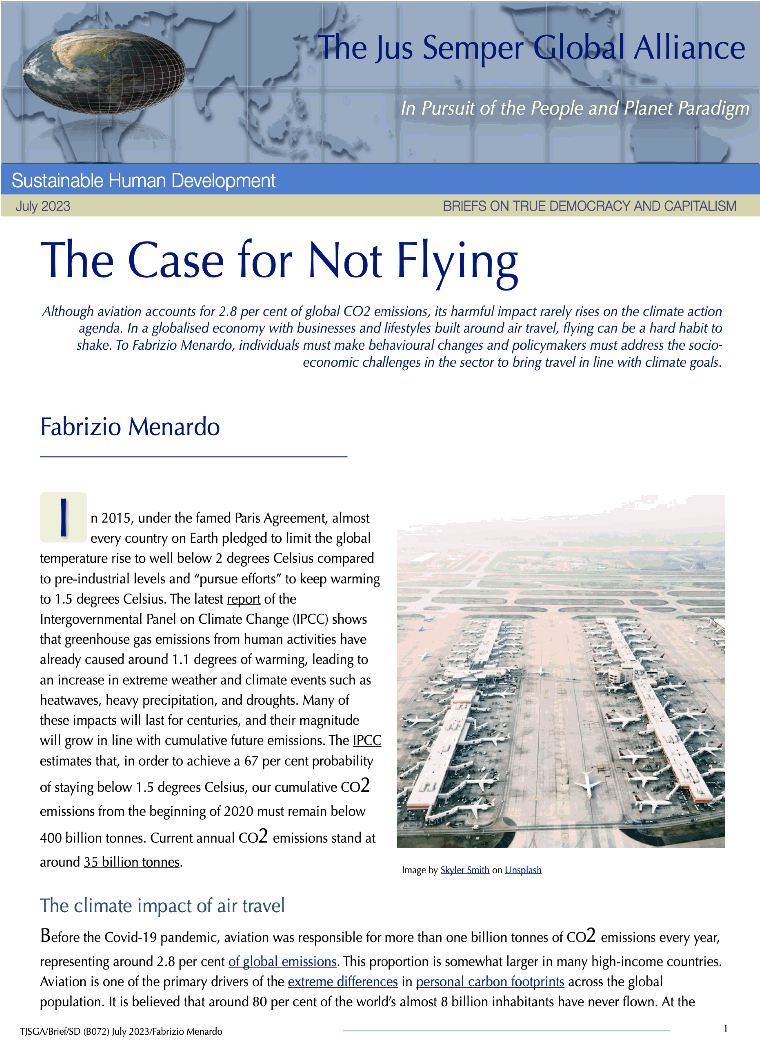The Case for Not Flying
Although aviation accounts for 2.8 per cent of global CO2 emissions, its harmful impact rarely rises on the climate action agenda. In a globalised economy with businesses and lifestyles built around air travel, flying can be a hard habit to shake. To Fabrizio Menardo, individuals must make behavioural changes and policymakers must address the socio-economic challenges in the sector to bring travel in line with climate goals.
Fabrizio Menardo
In 2015, under the famed Paris Agreement, almost every country on Earth pledged to limit the global temperature rise to well below 2 degrees Celsius compared to pre-industrial levels and “pursue efforts” to keep warming to 1.5 degrees Celsius. The latest report of the Intergovernmental Panel on Climate Change (IPCC) shows that greenhouse gas emissions from human activities have already caused around 1.1 degrees of warming, leading to an increase in extreme weather and climate events such as heatwaves, heavy precipitation, and droughts. Many of these impacts will last for centuries, and their magnitude will grow in line with cumulative future emissions. The IPCC estimates that, in order to achieve a 67 per cent probability of staying below 1.5 degrees Celsius, our cumulative CO2 emissions from the beginning of 2020 must remain below 400 billion tonnes. Current annual CO2 emissions stand at around 35 billion tonnes.
For a full read of this brief, click here or on the picture to download the pdf file. |






